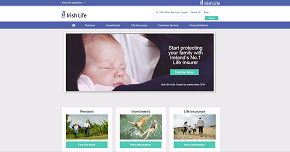Mind the Gap - Latest pension auto-enrolment model is a gender imbalance minefield
You get one chance to get it right first time.
The Government is embarking on a progressive and positive reform programme which will a see an Automatic Enrolment Retirement Savings System introduced in Ireland. As it says on the tin, the aim of Auto Enrolment is to make the decision for workers to save for a pension easier. It also makes it easier for employers to offer colleagues a workplace pension.
The Government has said that the new system will be put in place next year and that employee enrolments will commence in 2024. It is a pity therefore that recent decisions on the way Auto Enrolment will be delivered in Ireland have created material risks that the Government may be getting key features wrong. Unless Government has a serious rethink, its current plan could solidify the gender pensions gap, create more delay and more expense in introducing Auto Enrolment and reduce the choice available to employees of organisations right around Ireland.
In fairness to successive Governments, credit must be given to Minister Heather Humphreys for persisting with this important reform despite Covid-19 and economic uncertainty, and to her predecessor, Regina Doherty who did much of the heavy lifting on designing a scheme (known as the Strawman model) that engendered widespread support. But recent changes from the Strawman model published by then Minister Doherty in 2018 have inadvertently created new risks.
Take the gender pension gap first. Research by Irish Life in 2020 showed that despite joining pension plans at the same age as men, women are retiring considerably worse off than men. Women are likely to have pension pots of 22% less than men at retirement age. That’s a significant gap. The pension gender gap is caused by two key factors, one is differences in salary and the second is due to absences from employment for caring responsibilities taken by women. The latest model produced by Government limits Auto Enrolment to people earning over €20,000, disproportionately excluding women. It also removes the flexibility for women or their employers to increase payments or make lump sum contributions to cover any periods of unpaid leave or career gaps. The current plan also lacks clarity on what occurs with pensions contributions during maternity leave. This is patently unfair to women.
If, instead of the current proposal, the Government had stuck with using existing pension systems , as envisaged in the Strawman model, participants would have the flexibility to make additional contributions and lump sums and address the imbalance. Had the Strawman model been maintained, women availing of Auto Enrolment would have had access to this additional flexibility, enabling them to close the gap during the lifetime of their pension, should they choose to do so. At a time when progress has been made on women’s participation in the workforce, there is a sad irony that a progressive reform like Auto Enrolment could set women back in the area of pensions.
For unexplained reasons, the Government has moved away from then Minister Doherty’s original plan to a system which fundamentally differs in approach to countries like the UK, US, Australia and New Zealand, who have successfully used their existing pensions systems to implement auto enrolment. Instead, it is setting about building a new state monopoly. All the international evidence suggests building the necessary technology and administrative structures as a greenfield operation for Auto Enrolment will be significantly more onerous and expensive and will take much longer to complete than one which uses the existing pension systems. I’m sure that the Government will be acutely conscious of the potential regulatory minefield for the State as it takes account of competition rules on national and EU levels if loans, subsidies, or beneficial tax arrangements are confined to the new state entity. Its mine detector will need to be sensitively tuned.
A further casualty of the Government’s move from the Strawman model is the removal of choice to consumers in terms of picking their pension provider and the wide range of investment options available.
These comments are not a criticism of Auto Enrolment. In Irish Life we see the benefits every day in our business of saving for retirement for customers and employers. We want the same for those who will be saving through auto enrolment and especially for women who are already disadvantaged in pension provision. We want to see an effective auto enrolment system in place for as many citizens as possible as soon as possible.
This aim is more likely to be delivered if the Government reverted to its original Strawman model where the State enrols members, acts as an employee portal and then gives people a choice of one of four registered providers who have to use their own systems to provide all services thereafter. This model is tried and trusted and works very successfully in New Zealand in particular.
Auto Enrolment is a transformative, once in a generation reform. If it works well, as we’ve seen from other countries, it will enhance the lives of hundreds of thousands of our people. The flaws identified here are readily fixable. It is essential that the Government’s design of the new Auto Enrolment system gives it the very best chance of success.
After all, you get one chance to get it right first time.








